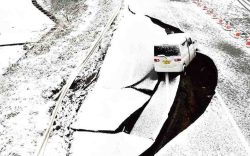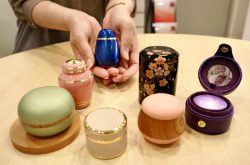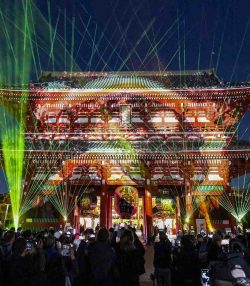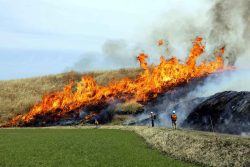Letter from New York / The Changing Face of The City: New Immigrants Are Transforming New York

Spectators attend the Lunar New Year parade celebrating the Year of the Dragon, in the Chinatown neighborhood of New York, on Feb. 25.
7:00 JST, July 7, 2024
The following is an installment of the “Letter from New York” column by Jacob Margolies, The Yomiuri Shimbun’s General Counsel for America. Having practiced law for over three decades in New York, he explores a variety of topics — cultural, economic and political — in and around the Big Apple, and examines issues that the United States, Japan and the world at large are facing.
Over dinner recently, my younger daughter, who teaches 9- and 10-year-old fourth graders at a public school in Brooklyn, was telling me she had discovered that one of her students, whom I’ll call James, had started his own detective agency.

James was charging fellow students 50 cents to solve cases. One student wanted him to find out who a girl in the class had a crush on. After investigating, James deduced that the affections of the girl in question were directed solely toward her family’s dog. For collecting fees from his classmates, James’ creativity earned him a gentle reprimand and a trip to the principal’s office, but his teacher was charmed by his audacity and imagination.
The 24 students in the class are nearly all either immigrants or first-generation Americans. Their families come from China, India, Yemen, Mexico, Ecuador, El Salvador, Haiti and the Dominican Republic. At school though, they are all Americans and New Yorkers and share with their classmates a common bond and experiences that extend far beyond detective work and solving cases. These children represent the face of a changing city.
There are over 1 million students in the city’s public school system. In recent years, New York has added several citywide school holidays, including the Lunar New Year in recognition of the growing number of Chinese students, Diwali for families from countries in South Asia and the Muslim holidays of Eid-al-Fitr and Eid-al-Adha to accommodate the school system’s rapidly increasing Muslim population.
How to integrate people from countries with different cultures, traditions and values into the United States is a perennial question. But one place where the process of change and assimilation happens extremely rapidly is in public schools.
Traditionally, many have described immigrants coming to New York, and the nation, as entering a “melting pot,” where a broad variety of people combine into a cohesive whole. In 1893, the renowned historian Frederick Jackson Turner referred to the “composite nationality” of the people of the United States, where “immigrants were Americanized, liberated and fused into a mixed race.”
In more recent years, the desirability and the reality of a single American culture have been called into question, and the concept of multiculturalism and recognition for distinct cultures and ethnic groups within a society has become accepted. David Dinkins, who from 1990 to 1993 was New York’s first Black mayor, frequently referred to the city as a “gorgeous mosaic” of distinct cultures and communities.
Assimilation into the city’s fabric happens over generations. It is a two-way process as immigrants also change the culture of the city. Food, language, pastimes, customs and characteristics that seem peculiar to long-established residents over time come to be regarded as ordinary and commonplace.
New York is a city of immigrants. Almost 40% of the city’s residents were born in a foreign country. The new New Yorkers are increasingly of Asian and Latin American descent. Between 2010 and 2020, the Asian population in New York City increased by more than 345,000 to make up over 15% of the city’s total population.
According to Census Bureau data from 2020, New Yorkers from the Dominican Republic are the largest immigrant population, followed by newcomers from China, Jamaica, Guyana and Mexico.
There are an estimated 590,000 Chinese Americans living in the city. Most reside in neighborhoods in the boroughs of Queens and Brooklyn that have supplanted the traditional Chinatown neighborhood in Manhattan as centers of Chinese immigrant life in the city.
As the city changes, political representation in the city’s legislative body, the 51-member City Council, is slowly accruing to the new New Yorkers, although there is a lag time that reflects the interval required for new inhabitants to become citizens and acquire the economic resources necessary for a successful electoral campaign. The current Council includes three members of Chinese descent, two Korean Americans and two South Asians. In the future, New York will likely elect as its mayor New Yorkers of Asian and Latin American heritage.
The waves of immigrants coming to New York have always been driven by a combination of hardship in the countries from which they were emigrating and the opportunity of a new beginning. This was true of the Irish fleeing the potato famine in the 19th century, and Jews and Italians escaping poverty and, in the case of Jews, violent pogroms at the turn of the 20th century.
Recently, the war in Ukraine has led to a surge of immigrants coming to New York from that country and Russia. There are neighborhoods in Brooklyn where store signs in the Cyrillic alphabet are a common sight.
Over the past year, tens of thousands of Chinese immigrants have made their way to New York, with most coming to the United States by crossing the Mexican border after lengthy journeys through Central America on foot. The increase is thought to be the result of the slowdown in China’s economy and frustrations over an increasingly authoritarian government.
Voters in many of the city’s immigrant enclaves are relatively conservative. Chinese and Korean neighborhoods that historically voted for Democrats have shifted politically in recent years, and in the most recent elections, many immigrants and first-generation Americans supported Republican candidates. The move to the right has been propelled by concerns about crime as well as anger over a proposal by former Democratic Mayor Bill De Blasio to make changes in the admissions process for the city’s elite public high schools that would have resulted in far fewer slots for students of Asian descent to increase the number of Black and Latino students.
Since April 2022, more than 200,000 asylum seekers, most coming here in hopes of escaping poverty, have come to the city, taking advantage of the free shelter that is offered under current New York law, with 30- to 60-day time limits, in most circumstances. As of April 2024, there were 65,000 migrants living in city shelters. More than 40% of the new arrivals are from Venezuela.
Many local elected officials, including Mayor Eric Adams, have bemoaned the billions of dollars being spent by the city to provide housing to the newcomers, but a report put out earlier this year by the city comptroller, Brad Lander, argued that the new migrants, including those who are undocumented without legal authorization to work, are on balance a benefit to the city economy.
Although they are ineligible for most government benefit programs, many undocumented immigrants are employed and paying taxes, and filling labor shortages in both skilled and unskilled sectors as baby boomers retire.
Regardless of debates over costs and benefits, what is certain is that immigrants will keep coming and the process of acculturation will continue. The process is visible throughout the city.
You can see it with teenage girls in Brooklyn wearing hijabs and walking down the street hand in hand while singing a Beyonce song; the Asian-American heritage nights hosted by the local professional baseball and basketball teams at sporting arenas and stadiums; the cricket matches played by South Asians and Caribbeans in city public parks; the Filipinos providing home health care for elderly New Yorkers; and in the daily interactions of students in my daughter’s fourth grade class.
"JN Specialities" POPULAR ARTICLE
-

The Japan News / Weekly Edition (12/12-12/18)
-

Noodle Dining Shunsai / Rich Oyster Ramen to Savor at Odasaga; Experienced 68-year-old Owner Creates Numerous Ramen Varieties
-

The Japan News / Weekly Edition (12/5-12/11)
-

People Keep Loved Ones’ Ashes Close in Special Jewelry, Small Urns as Unique Way to Memorialize Them
-

The Japan News / Weekly Edition (12/19-12/25)
JN ACCESS RANKING
-

Tokyo Economic Security Forum to Hold Inaugural Meeting Amid Tense Global Environment
-

Keidanren Chairman Yoshinobu Tsutsui Visits Kashiwazaki-Kariwa Nuclear Power Plant; Inspects New Emergency Safety System
-

Imports of Rare Earths from China Facing Delays, May Be Caused by Deterioration of Japan-China Relations
-

University of Tokyo Professor Discusses Japanese Economic Security in Interview Ahead of Forum
-

Japan Pulls out of Vietnam Nuclear Project, Complicating Hanoi’s Power Plans

























